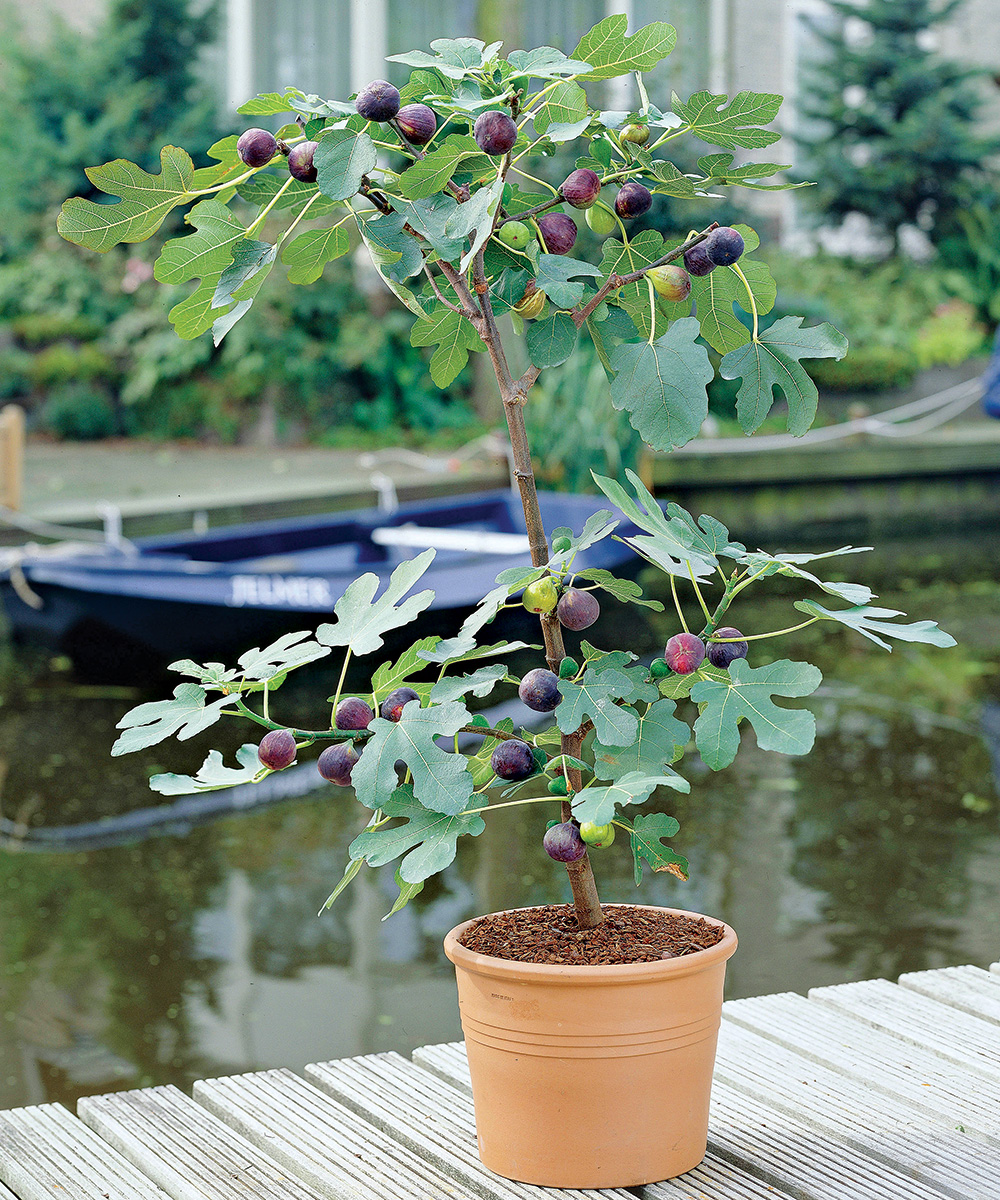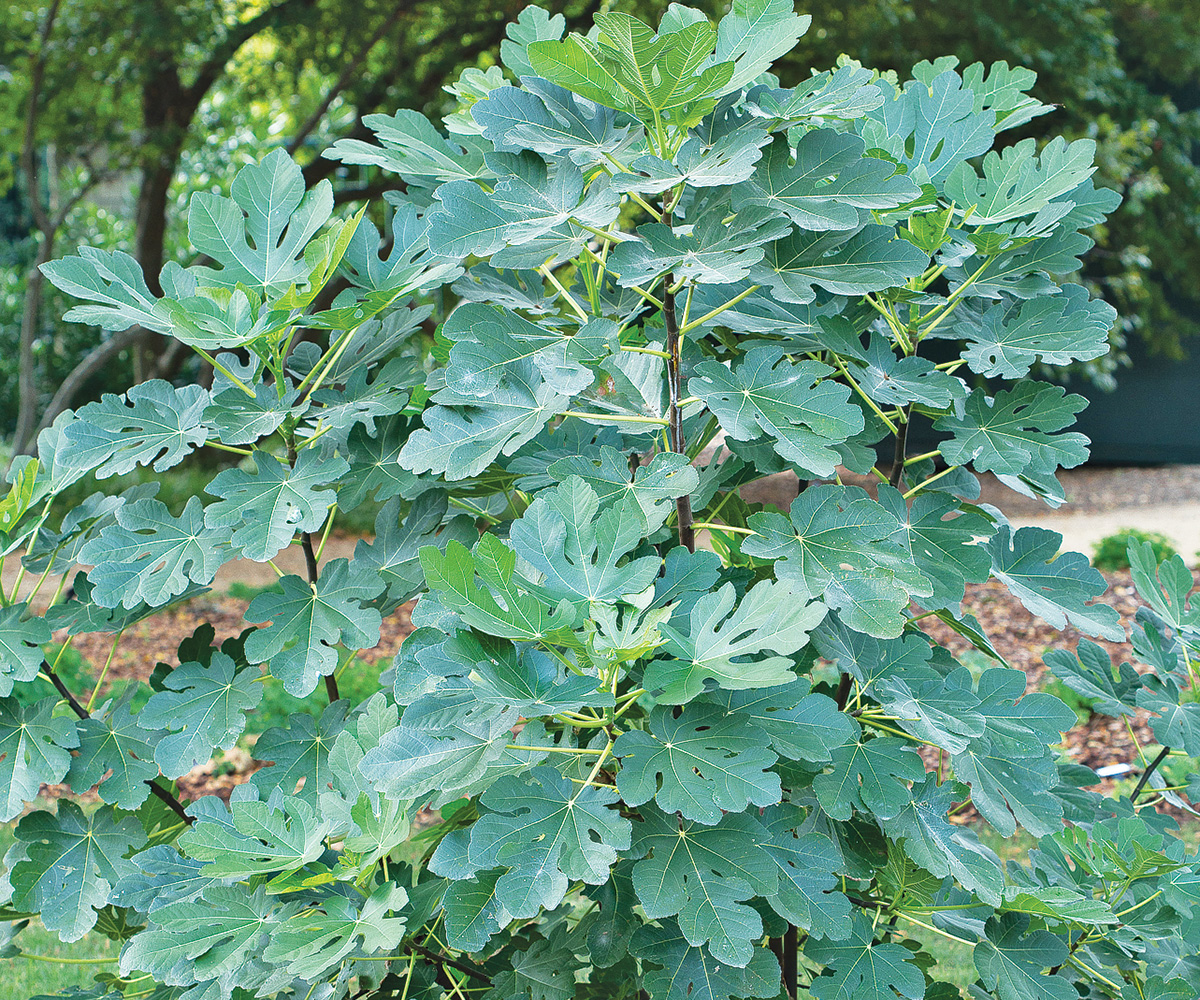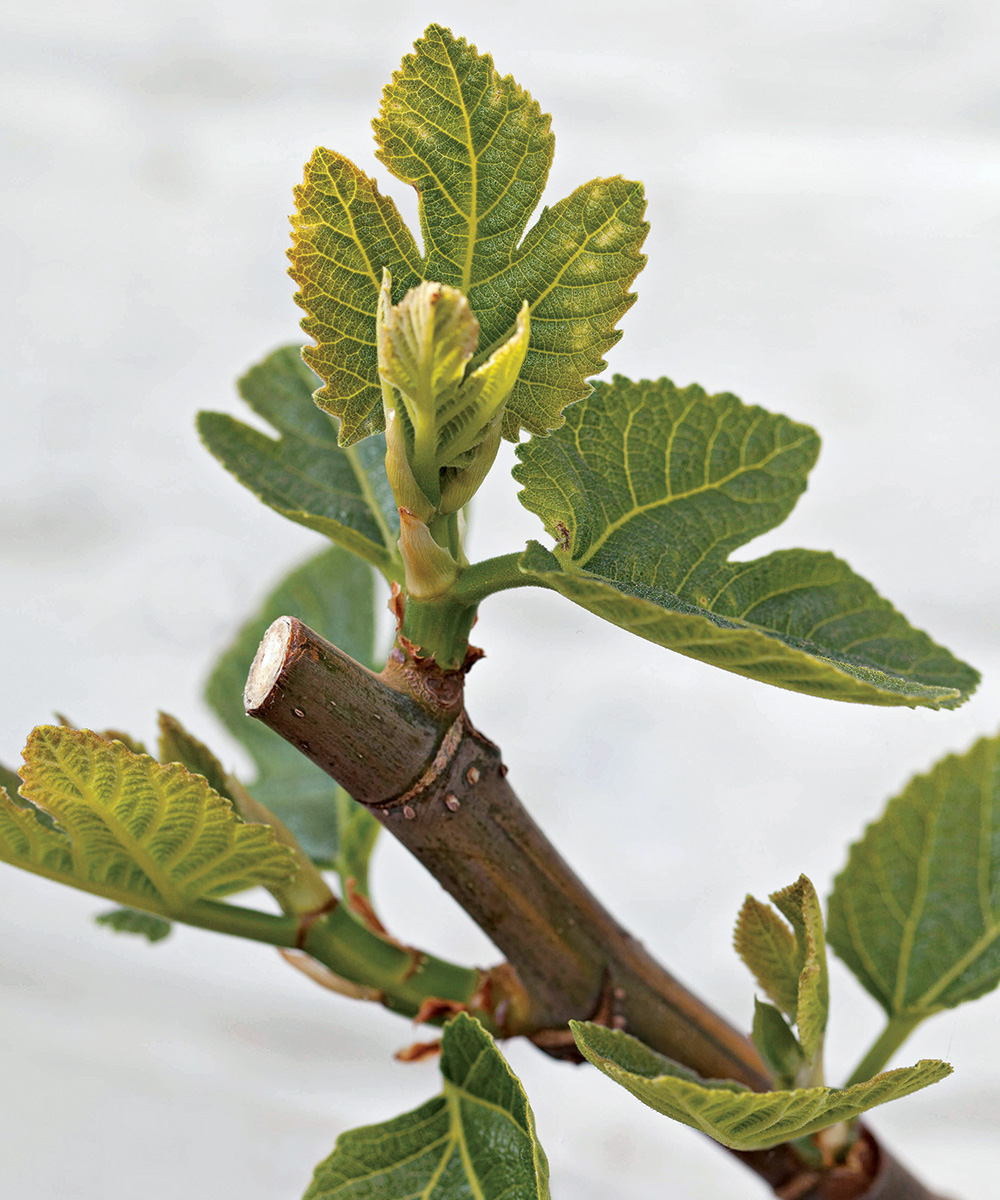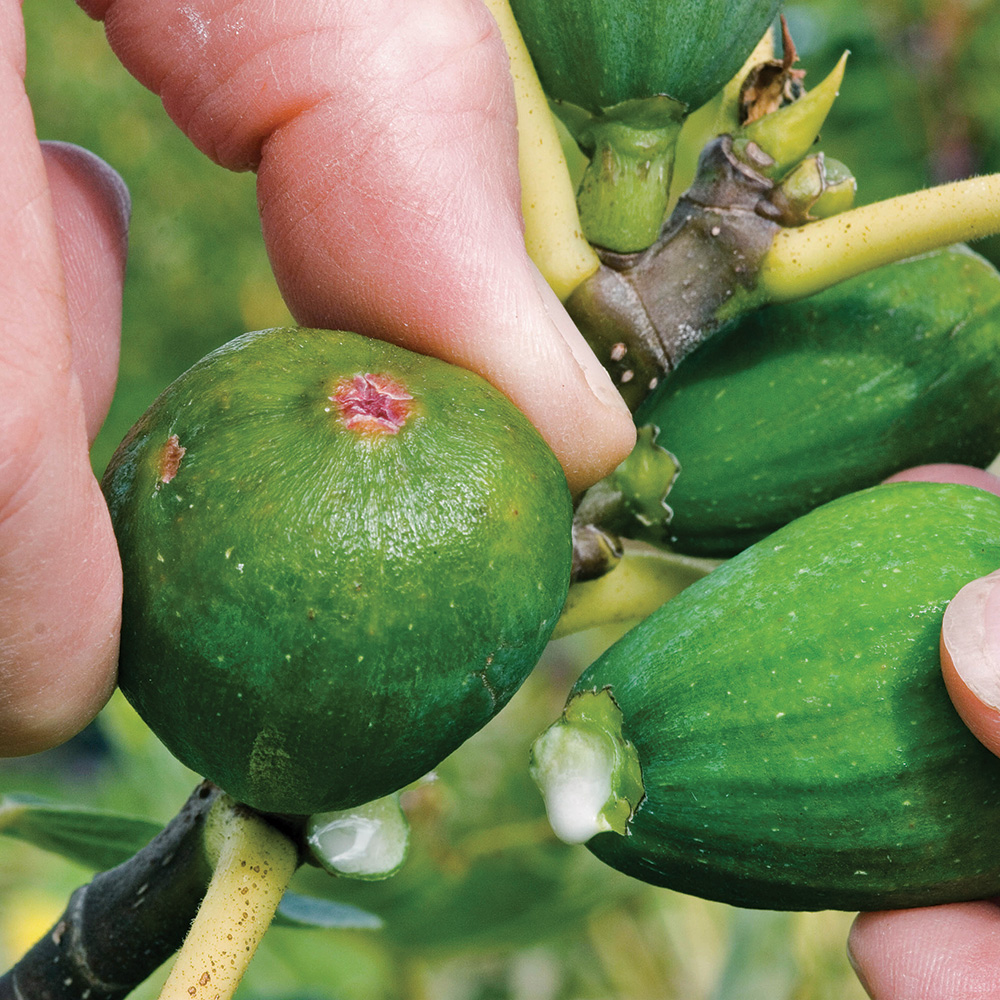How to Grow Figs, Even in Colder Climates
These fascinating fruit trees are easier to maintain than you might think

Figs intrigue many gardeners. The breadth of interest struck me when I donated a spindly little dormant fig plant for a raffle and the winner told me she had received multiple offers from people wanting to buy it. For people with roots in the Middle East and the Mediterranean, figs (Ficus carica and cvs., Zones 6–10) are a link to family. There are stories of plants passed down through generations, descended from cuttings taken in the Old World. There’s also a sensory aspect: My neighbor Andreas says that the sweet smell given off by my fig trees makes him feel as if he were back in Greece. For other people, the draw is the succulent fruit, a touch of the exotic they are surprised they can grow.
At a glance | Pests and diseases
- Fruit theft by wildlife can be prevented by netting smaller bushes, placing mesh bags over individual fruit, or installing a motion-activated sprinkler.
- Root-knot nematodes cause swelling on the roots that can slow growth and lead to poor fruiting. They are most often a problem in light, sandy soil. If nematode pressure prevents you from planting in the ground, consider growing plants in containers.
- Fig mosaic virus can cause mottled leaves and stunted growth. It is very common and cannot be cured, so treat it as something to live with. Plants will often outgrow symptoms when conditions are good.
- Fig rust is a fungal disease that attacks young leaves, causing green-yellow spots that eventually get larger and become brown. It’s a bigger problem in humid areas, where it can lead to premature defoliation of plants and reduced yield. Elsewhere it is more of an aesthetic problem. Good sanitation—collecting dead leaves and properly disposing of them—can slow down the spread and prevent reoccurrence the following year.
My reason for growing figs is simple: The fruits are too perishable to ship when ripe, and they don’t ripen after picking. So if I want to devour perfectly ripe fruit and not simply tolerate “fresh” supermarket offerings, I need to grow my own.
Get familiar with figs

While many people associate fig plants with California or Mediterranean countries, they can be part of backyard landscapes beyond those mild climates. In colder areas, they just need creative gardeners to help them.
The plants are deciduous, going dormant over the winter in all but the warmest parts of North America. Fig trees tolerate more cold than many people realize. Mature, dormant plants can survive temperatures as low as 15° to 20°F—sometimes even colder—without damage. Hardiness in figs is not an exact science, though young plants are more tender than mature ones. Fruit and young shoots will be affected by cold before older, woodier stems. A plant that is already dormant can withstand cold better than an actively growing plant. There are other considerations too, including wind, the duration of cold temperatures, how exposed the plant is, and the extent of the temperature drop.
Many fig varieties produce more than one crop per year. The main late-summer crop grows on wood from the current year, but many varieties produce an early “breba” crop on wood from the previous year. Don’t expect to see flowers on a fig tree, though. A fig “fruit” is actually an inside-out bundle of tiny flowers. Although some commercially grown varieties must be pollinated by a small wasp to produce a crop, most figs grown by home gardeners are “common” figs, which do not require pollination.
Planting and summer care are straightforward
The top consideration when scouting a planting location is to find a spot in full sun. Other than that, figs are not finicky, tolerating a wide range of soil types as long as the soil is well drained. Wet roots, especially in winter, can rot.
Fig roots are greedy and vigorous. This makes caring for established in-ground plants very simple, because they largely fend for themselves. Between the dense mat of roots and the dense canopy of leaves that shades the ground, weed growth underneath is usually minimal. Top-dress the soil around fig plants annually with compost. In sandy soil, more-frequent feeding might be necessary. Avoid overfeeding, which results in lots of leaves but no figs. Keep young or recently transplanted figs watered until they are established.

Figs in containers require regular watering and feeding. A balanced, all-purpose plant food works well. Consistent moisture is key for potted plants because the first thing figs do in overly dry soil is drop leaves and young fruit. You can use pots with reservoirs to provide a constant supply of moisture, or place a saucer under the pot to catch runoff when the plant is watered. That water will wick back up into the pot as the soil dries.
Prune and shape to keep the plant manageable
When left untended, figs are messy plants, suckering and growing into a tangle of branches. Prune to remove crossing branches. Be aware that when a leaf is picked off or a branch pruned, there is a white, sticky sap that can be a skin irritant. Those with sensitive skin should wear gloves when working with fig trees.

The gardener can decide the ultimate height of the plant and then control that height through pruning. For container plants, consider the height of doorways through which they must pass on the way to winter storage. For in-ground plants, think about ease of harvest and whether a ladder will be used.
Figs are often grown with a single trunk in warm areas where there is no risk of winter damage, and they can develop into branching trees 15 to 30 feet tall with a wide canopy. In areas where cold weather will cause shoot dieback, grow figs as bushes instead of trees. Having many branches instead of one big trunk is a form of fig insurance, and a bush can more easily be protected by wrapping or burying. To grow a plant as a bush, keep four to five strong stems.
Plan ahead for a sweet harvest
If you want to encourage main-crop fruit, prune the plant when it is dormant, as main-crop figs form on new growth. If the goal is to get plenty of breba fruit, prune the plant in summer after the breba harvest, removing approximately one-third of the branches.
There is no need to thin fruit. In colder areas, however, pinch off figs that are unlikely to ripen. Some cold-climate growers even pinch out the shoot tip after three to five figs have formed in order to slow down vegetative growth.
Where summer heat and season length are limiting factors to ripening fruit, try to plant in a microclimate that provides additional heat, such as a south-facing brick wall that collects heat during the day and radiates it in the evening. Another cold-climate approach is to grow varieties that produce a heavy breba crop.

How will you know when to harvest?
When a fig is picked too soon, white sap comes out (pictured). Wait longer next time. Although there are a number of ways to know when a fig is ripe, not every variety behaves the same way. Here are some common clues.
- The fruit color changes.
- The fruit droops as it gets larger and the “neck” softens.
- The fruit retains the impression of a gentle squeeze.
- A drop of liquid comes out of the hole at the end of the fig (the “eye”).
- The skin cracks.
Once trees drop leaves and go dormant, the remaining figs will not ripen and can be removed.
More on growing figs:
Steven Biggs, author of Grow Figs Where You Think You Can’t, has trialed so many varieties in his Toronto garden that his family put him on a “fig diet” to make space for other things.
Sources
- Almost Eden, Merryville, LA; 337-375-2114; almostedenplants.com
- One Green World, Portland, OR; 877-353-4028; onegreenworld.com
- Raintree Nursery, Morton, WA; 800-391-8892; raintreenursery.com
- Stark Bro’s, Louisiana, MO; 800-325-4180; starkbros.com
- Wilson Bros Gardens, McDonough, GA; 770-573-1778; wilsonbrosgardens.com
Fine Gardening Recommended Products

Chapin International 10509 Upside-Down Trigger Sprayer
Fine Gardening receives a commission for items purchased through links on this site, including Amazon Associates and other affiliate advertising programs.

Gardener's Log Book from NYBG
Fine Gardening receives a commission for items purchased through links on this site, including Amazon Associates and other affiliate advertising programs.

Hasegawa Tripod Ladder
Fine Gardening receives a commission for items purchased through links on this site, including Amazon Associates and other affiliate advertising programs.







Comments
Log in or create an account to post a comment.
Sign up Log in